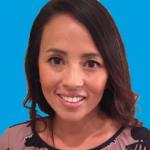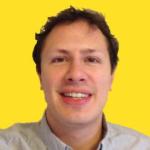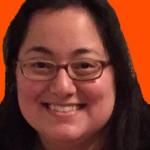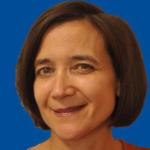
By MƒA Master Teachers Camila Lock, Michael Pedicini, Jessica Quenzer, and Marisa Wagner
We believe this is a great time for science education in America. There is increased interest in space science and exploration, which is evident in popular movies like The Martian and Interstellar, as well as in investment by private companies in space programs.
Incredible advances in biotechnology continue to be made, such as CRISPR gene editing, and, very recently, the first PCR in space.
Tomorrow’s scientists, explorers and, inventors are in our classrooms. As educators, we have a responsibility to provide experiences that engage and excite all of our students about the possibilities of what they are capable of achieving as scientists.
We feel that having our students take part in “authentic inquiry science” – research with real-world applications – is invaluable to motivate them and to foster their natural curiosity and talents.
Many schools promote student access to authentic science through multi-year programs specifically dedicated to research. By participating in these programs, students learn how to be scientists. They are given time to delve into original research questions from start to finish – from synthesizing background information to planning and performing experiments to communicating findings in written and oral formats. Students are encouraged to present their findings to a wider community of peers and professionals through local, regional, and national competitions.
We teach in three different large New York City public high schools with diverse populations that have dedicated multi-year research programs. In our roles as facilitators in these programs, we are always looking for more opportunities for our students to conduct original research with real-world science applications. This year, our students participated in the Genes in Space competition, which provided that exact opportunity.
Genes in Space challenged our students to conceive of and develop ideas for original research to be performed on the International Space Station (ISS), probing a biology question that requires PCR in space. We were attracted to this competition because it provided a relevant, real-world application for our students’ ideas. What an inspiration to think that your research project could be aboard the ISS! Students were excited to know that their experimental plans could boldly go where no woman or man has gone before, with the potential to have meaningful impact on our scientific body of knowledge.
The beauty of authentic science opportunities like Genes in Space is the accessibility to all students regardless of whether or not their school has a multi-year research program. Research within the confines of the school walls is often limited by availability of time, money, and laboratory resources. This lends itself to stale research topics like “The Effect of Light Wavelength on Plant Growth.” Having students do these types of projects to learn the scientific process is valuable. But let’s be honest – our students will find out what their results should be by searching the internet. The experiment ends up being a verification of what is already known. In contrast, Genes in Space and similar programs provide opportunities to all students, regardless of resource availability, to participate in original research – explorations that can lead to new and unexpected results.
We strongly feel that for students to really get excited about and learn science, they must be provided access to authentic science experiences like Genes in Space.
Toward increasing access to authentic science for all students, we share the following highlights of our personal experiences with Genes in Space and encourage other science teachers to seek out similar opportunities.
The research process is a heavy time investment for our students. For underclassmen, the end goal can seem distant, since competitions generally don’t take place until junior year. We don’t want our students to lose their natural motivation, so having freshmen participate in competitions is valuable. This year, we encouraged students from all grade levels to submit to Genes in Space.
Because the competition integrated a biological focus with engineering and physics components, students of varying interests and abilities were engaged in genuine research development. Our school was fortunate to receive a Constellation Award for the highest number of student submissions per school. As a research team, we were inspired that our “collective enthusiasm for Science and Space” has been recognized.
–Camila Lock and Michael Pedicini
Our junior research students are already paired with a mentor in a university lab, doing independent original research that will culminate in a senior research paper. In addition, they work together on group projects at school, and this year they participated in the Genes in Space competition. The value of competitions like Genes in Space for my students is multifold. They conduct real-world science in their labs, but why not consistently provide as many of these experiences as we can? Students honed important science skills, stretching their creativity as they experienced how research gets started – from initial identification of an interesting and relevant problem to writing a formal proposal. Working as a class to brainstorm research questions and then in smaller groups based on interest to develop proposals fostered essential collaborative and communication skills. Topics investigated allowed in-depth exploration of diverse content. My students were so enthusiastic during the process and felt a true sense of excitement and accomplishment as they submitted final proposals. Two of my groups were proud to earn Honorable Mentions. Programs like Genes in Space greatly increase the richness of the research experience for my students.
–Marisa Wagner
Our major goal is to guide students into long-term research projects. I found Genes in Space beneficial as a highly structured experimental design project applicable for any experience level.
Students enjoyed the project because it allowed them to think creatively about a real problem, with the potential for their efforts to be followed through, resulting in a genuine contribution to the world. The proposal word limit forced them to be concise, honing their communication skills. They learned that background intellectual work must precede benchwork. This is critically important, because frequently students want to dive into the lab without thinking about why they are using certain procedures. Writing proposals from scratch forced them to pause and consider. They needed to research techniques and comprehend them. It made them realize that coming up with a solid experimental design is difficult, hindered by many practical limitations. Students could apply the skills and insight gained from this assignment to other persuasive endeavors.
One of my students, Julian Rubinfien, made it as a Finalist and then won the competition. He put an enormous amount of effort into his proposal, meeting with me during his free periods to discuss plausible ideas and carefully reading dozens of journal articles about telomeres and STELA. Even after school ended, we would work on his presentation for the ISS R&D conference.
–Jessica Quenzer
We hope that sharing our experiences will encourage science teachers at all schools, regardless of size or budget or demographics, to seek out opportunities like the Genes in Space program. Our students do not require multiple years of experience, large amounts of money, or sophisticated lab equipment to do authentic science. Knowing that their ideas and efforts have real-world meaning and applications excites our students about the scientific process and all of its wondrous possibilities. And, it is this enthusiasm that inspires our students to realize their full potential as our future leaders in science, innovation, and exploration.



